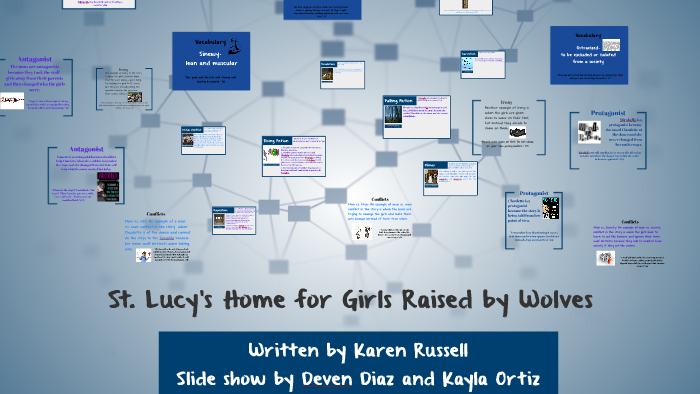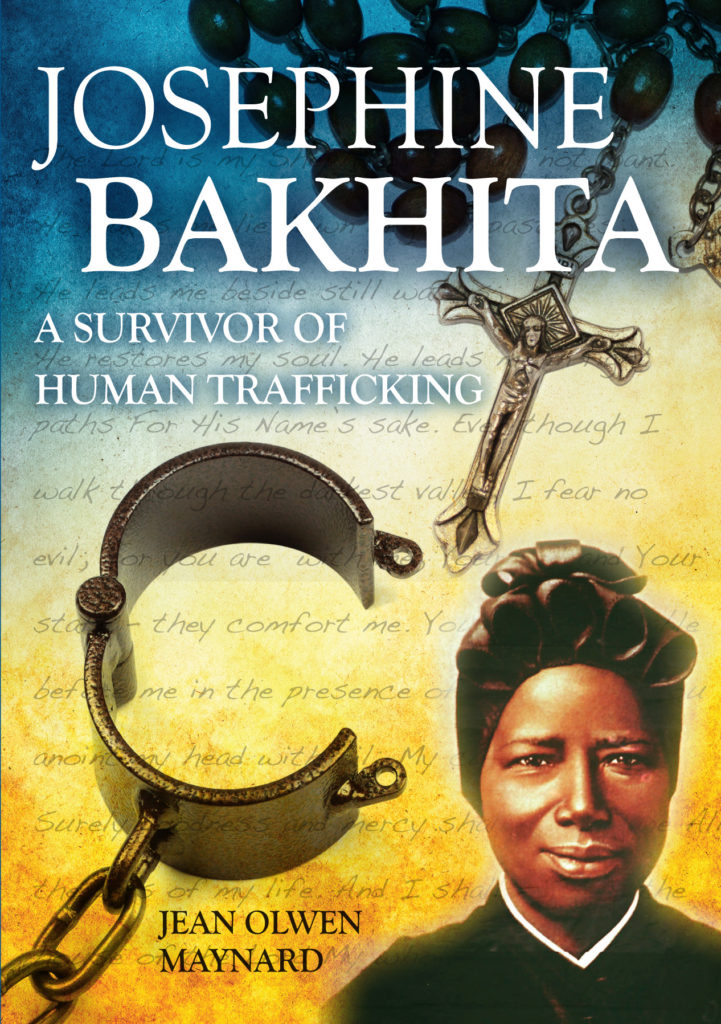Table of Content
For instance, in stage 2 Russell depicts, “The pack hated Jeanette. She was the most successful of us, the one furthest removed from her origins.” This conveys that though she was the most successful, she was also hated by everyone due to her evolution. Jeanette didn’t let the pack decipher how she was going to behave, even if that meant hating her.
In Stage One, the epigraph closely relates to the characters’ development, yet doesn’t consider that the girls could be fearful in their new home due to interactions with the nuns. Color imagery is one of these literary devices that is used when colors give objects a symbolic meaning. Lucy’s Home for Girls Raised by Wolves” by Karen Russell, girls who have been raised as wolves are thrust into the unknown as they are forced to adapt to human society.
Analysis Of St. Lucy's Home For Girls Raised By Wolves
In the story the packs parents send the girls off to the human world in hope that they would have a better life. All of the girls are having to learn how to adapt to there new life. One of the girls which is Claudette developed by the nuns handbook thought the five stages it the book. In the collection’s title story, a pack of girls raised by wolves are painstakingly reeducated by nuns.
We are told of wolf-girls, star-gazing and alligator wrestling - this book holds a story to grab anyone's imagination, I would recommend to all. Jeannette’s mother believed that if the pets became reliant on humans, they would not be able to survive out in the wild. She also applied the theory to children in general; “Mom always said people worried too much about their children.
St. Lucy's Home For Girls Raised By Wolves
Secondly, in stage 3, Claudette shapes the understanding that she may seem to be adapting well, but it may be harder than she lets everyone see. The text expresses, “...pretending felt almost as natural as nature.” This illustrates that though things may be hard for Claudette, she puts on a good face for everyone else. That specifically makes her different from both Mirabella and Jeanette as they both are either adapting well or not at all. This also makes her the most relatable character as she resides in the middle of being perfect and staying close to her origins. She has her own ways of learning to grapple with adapting to a whole new environment. People who endure dislocation feel out of place and have many mixed emotions.

In this novel, the author makes extensive use of color, which acquire the symbolic value and serve as a tool for the disclosure of the artistic world. Colors become an integral part of the character of the world and reveal their nature, serve as a means of an opposition of some characters to each other. In addition, every writer, along with the traditional associations, also has its own individual vision of color symbolism. Therefore, in order to understand the true meaning of the work, it is necessary to understand these implications.
St. Lucy's Home For Girls Raised By Wolf Analysis
Lucy is highly beheld for her beauty as her appearance is that of a luminous beauty with fair hair, that is described as “sunny ripples” , and pure bright eyes. I'm about half-way through this collection of stories and so far they are hilarious. I had to read St. Lucy's Home for Girls Raised By Wolves for my English Lit. It's such an imaginative and intelligent book, with fantasy stories addressing important issues beneath the creativity and magic. I bet she's really cool and her apartment is awesome and she has lots of great shoes. I told you that the conch shell story was my favorite because i felt put on the spot and distracted, and that was the first one i thought of.
Lucy’s Home for Girls Raised by Wolves” by Karen Russell, Claudette is forced to worry about both, along with many more. Through Claudette’s journey she is faced with several obstacles and challenges that test her commitment and determination to become “civilized and ladylike, couth and kempt” . Claudette makes the transition from wolf to human girl by beginning to act more civilized with a changed mindset and separating herself from the pack.
Feral Diction In St. Lucy's Home For Girls Raised By Wolf
She has a unique voice and gift for stringing lovely chains of words together there's no doubt, but just about every story in here suffers from Raymond Carver Syndrome. They all come clanking to a sudden, sometimes bewildering halt. On its own, each story in this collection is a treasure, in which children have minotaurs for fathers or hunt for the ghosts of siblings washed to sea in giant clamshell sleds.
The handbook shows the expectations of the girls and what should be in store for them. Russell uses this handbook to develop Claudette 's character throughout the story. Claudette changes throughout each stage, learning and shaping her new identity in each one.
As they learn to adjust to their new surroundings and restructure their lives to become more civilized, the three girls pursue distinct paths to development and overcome new challenges. Furthermore, the eldest of the three sisters, Jeanette adapts way differently to her new environment than Mirabella as well as similarly to Claudette. Meaning, Jeanette became more civilized much faster than any other member of their pack, she made no mistakes and was also the nuns’ favorite girl.
It's proven that warm colors trigger thoughts of happiness, energy, and optimism. Title story from St. Lucy's Home for Girls Raised by Wolves by Karen Russell, published 2007. I've recently been making a point of reading more short stories because I'm interested in trying my hand at writing some. As I've read more, I've discovered that there are certain genres that seem to excel. To conclude, the three sisters; Mirabella, Claudette, and Jeanette all go through numerous modifications in their newly found life.
Karen Russell uses epigraphs from The Jesuit Handbook on Lycanthropic Culture Shock to organize her short story, “St. Lucy’s Home for Girls Raised by Wolves.” The epigraphs provide short descriptions of how the humans running the school think the girls will develop at particular stages of the girls’ education. Each epigraph is followed by the memories of Claudette, the narrator of the story, who was a student at St. Lucy’s. Claudette’s development sometimes mirrors the stages described in the epigraphs, but often differs in significant ways. As a whole, the epigraphs do not reliably describe Claudette’s development.

Lucy stands in many ways in contrast to Mina’s character as their moral views and ways of life are distant. She has no occupation and is in no way seeking any form of education. Due to this fact she resembles at first initially in no case the modern New Women, as these sought for independence and education. Her personality can be described as girly, lovely and ‘sweetly innocent’, a seeming sample of Victorian perfection.





















